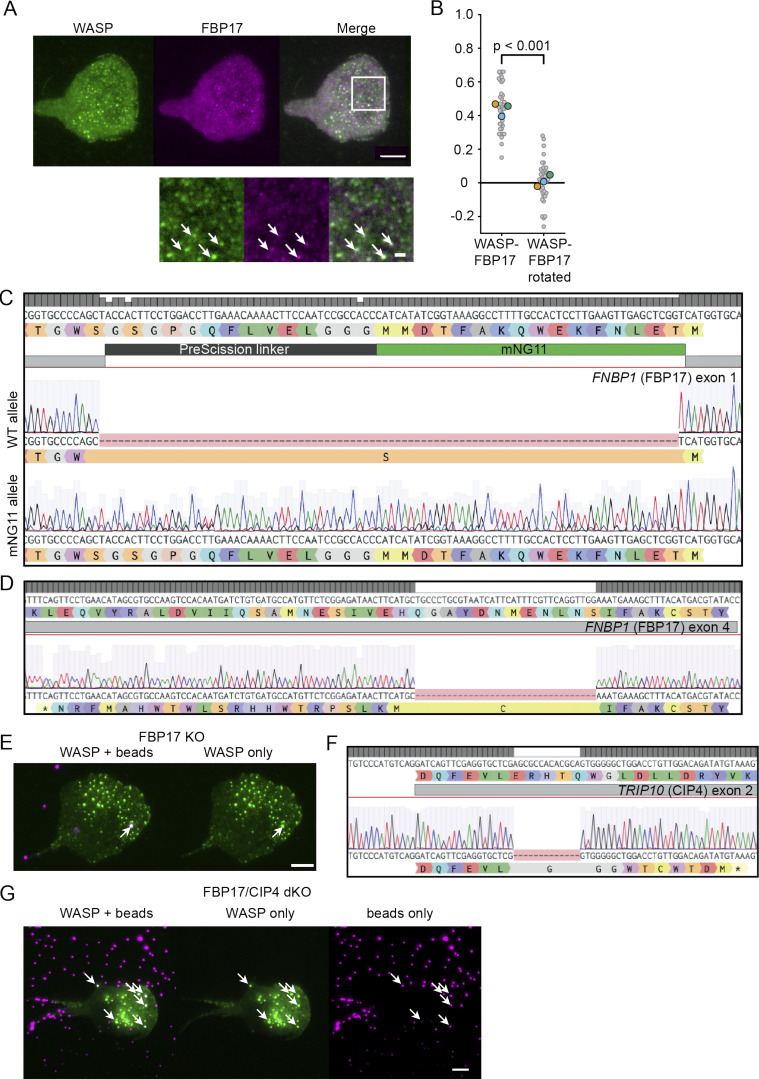Figure S3.
FBP17 colocalizes with WASP, but neither FBP17 nor CIP4 are required for WASP curvature sensitivity. (A) Exogenously expressed WASP and endogenous FBP17 colocalize. Below shows a zoomed inset with arrows marking example positions of overlap. Scale bar is 1 μm in the inset. (B) Pearson correlation coefficients between WASP and FBP17 reveal significant colocalization (r = 0.44 ± 0.02) compared with a 90° rotated control (0.01 ± 0.02). n = 38 7.5 × 7.5-μm regions of interest collected over three experiments. P = 1.51E-17 by a paired two-tailed t test on the full distribution. (C) Sequencing shows a WT allele and a correct insertion of mNG211 in the isolated heterozygous FBP17 KI clone. (D) Sequencing of an FBP17 KO line shows homozygous deletion of 34 bp after amino acid 74, which causes a frame shift and early termination that disrupts the BAR domain (amino acids 1–264). (E) Exogenous WASP continues to form puncta and enrich to bead-induced invaginations in the absence of FBP17. The arrow marks an example site of WASP recruitment to a 500-nm bead. (F) Sequencing of a homozygous Δ13 bp CIP4 KO clone generated in the FBP17 KO background shown in D. (G) Endogenous WASP continues to form puncta and enrich to 200-nm bead-induced membrane invaginations in the absence of both FBP17 and CIP4. Arrows mark example sites of WASP recruitment to beads. Scale bars are 5 μm. dKO, double knockout.

